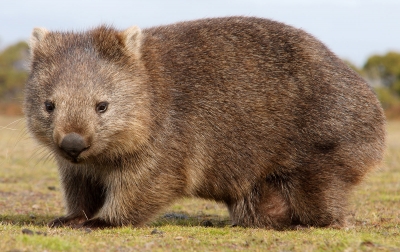
The Koala’s closest living relative, wombats are endemic to (only found in) Australia and are among the largest burrowing mammals in the world.
Wombats excavate these burrows in well-drained soils, often near creeks and gullies. They dig soil with the long claws on their forelegs and push it out with their back legs. They then roll on their sides to dig the walls.
During the breeding season chambers become nests, softened with grass and leaf-litter. Most wombats are solitary but some burrows can house a colony of ten individuals.
They can travel 3km a night to eat grass, shoots, roots and shrubs (watch some eating take place below). Like beavers, their incisors are continuously growing, so they need to gnaw on hardy material like bark to wear down their teeth.
As marsupials, female wombats care for their young in pouches on their underside. Like Bandicoots, the pouches open backwards so they don’t fill with soil while digging!
When first born, wombats weigh only one gram. The baby wombat leaves the pouch at about five months old, and can care for itself at seven months. Wombats can live up to 26 years in the wild.
Picture Credit : Google



